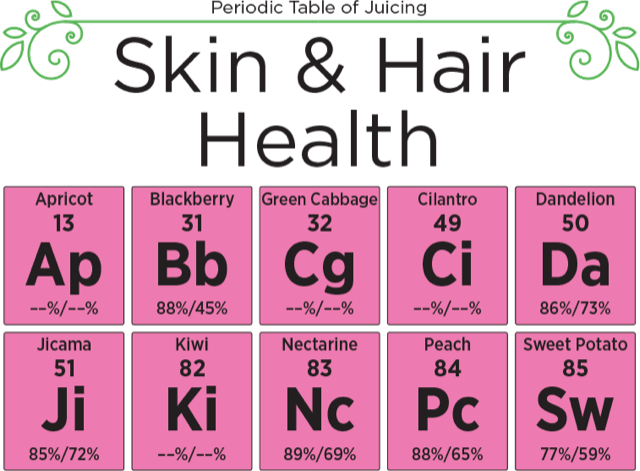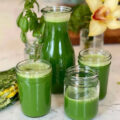By Ilene Ruhoy, MD, PhD & Jennifer Reichel, MD
Introduction
When people start juicing for health, one of the first things they notice is an improvement in their skin. Their skin is clearer, brighter, and more hydrated. And, their hair has never grown faster.
For this month’s feature, I am joined by Dr. Jennifer Reichel, a board-certified dermatologist, and cosmetic expert featured in news sources like New Beauty, Allure, Skin & Aging, and MedEsthetics. We discuss what healthy skin and hair physiologically looks and feels like, the benefits of drinking juice as a part of your hair and skincare routines, as well as our favorite skin and hair-healthy foods and juice recipes. We will share insight on what we have learned through our careers in two different medical fields in the hopes of providing you a well-rounded view on the topic of skin and hair health.
Before we dive in, as always, I invite you to engage with this blog post by using the comment box below or on PURE Juicer social media @purejuicer. Enjoy!
In this Edition
- What you need to know about the physiology of the skin
- The impact of food and good nutrition on skin health
- How can juice and phytonutrients create and maintain healthy skin and hair?
- Juice recipes to supplement your current hair and skincare routines
- Aging skin and hair
What you need to know about the physiology of the skin
The skin is the largest organ of the human body. It makes up the integumentary system that provides a protective barrier for your body. This barrier doesn’t just keep the bad things out, it also helps retain what’s important within.
Skin includes the top layer, called the epidermis, (“your epidermis is showing!”), and the deeper layer, the dermis. The epidermis and dermis contain different types of cells, all with different functions. These include keratinocytes, fibroblasts, melanocytes, mast cells, stem cells, and more.
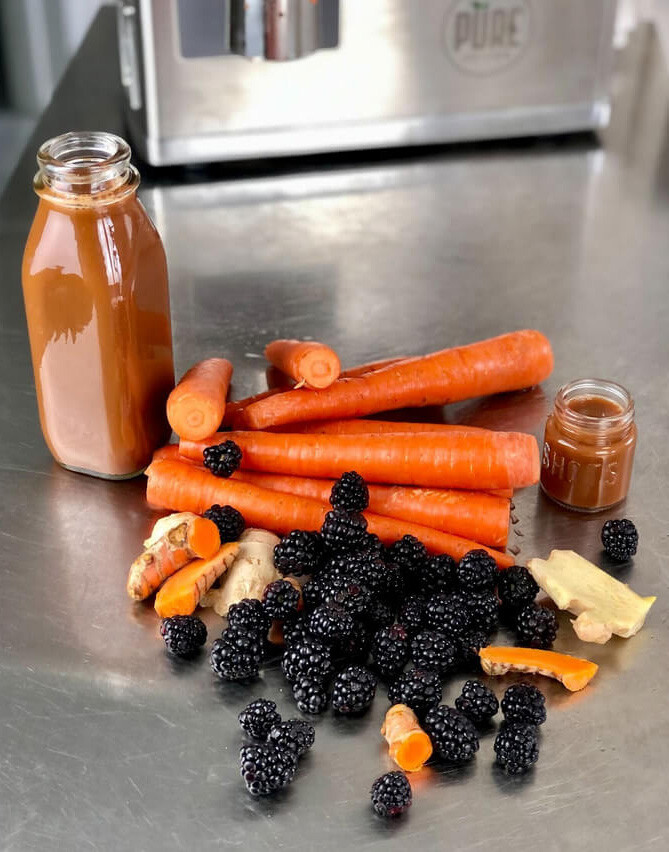
The complex anatomy has many functions including connecting the skin with muscles and bones, balancing the internal milieu of the skin, enhancing wound healing, maintaining internal temperature homeostasis, secreting hormones, protecting the body from invasion, and more. In addition, as there is much dialogue today regarding the gut microbiome, the skin maintains its own microbiome (maintaining the right cutaneous microbiome can help deter abnormal sweating, odor, and acne).
The skin organ also serves as an elimination organ, largely via our sweat glands. These glands pick up metabolic waste by-products and cellular debris from the systemic and lymphatic circulations and thereby engage in the gut-skin connection – hence why there are skin rashes due to food allergies. Physiologically the gut and the skin are so heavily interconnected that what we choose to eat plays a critical role in the health of our skin and therefore how quickly our skin ages.
The skin relies on what the body provides it to do its job…hydration, enzymes for multiple functions, vitamins, minerals, and more. We know that topical treatments for all of these can make a difference in the health of our skin, but there is a key role that our internal body has. This is why food and good nutrition are fundamentals when it comes to skin and hair health.
The impact of food and good nutrition on skin health
Nutrition has an impact on numerous biochemical processes in the skin, including oxidation, inflammation, proliferation (cell production), and glycation (excess sugar molecules in the skin which lead to loss of firmness and elasticity).
Extreme examples of how poor nutrition affects the skin occur in people with true vitamin deficiencies. For example, severe vitamin C deficiency (Scurvy) leads to easy bruising, abnormal hair growth, and poor wound healing.
Poor nutrition, as well as environmental exposures, and lack of sleep are known to contribute to a pro-inflammatory state, which, in turn, affects the integrity of extracellular matrix proteins (collagen, elastin) in the skin. Chronic inflammation leads to damage by free radicals, DNA mutation, telomere shortening (a marker of aging), impaired cell clearing, and ultimately immune dysfunction, degeneration, and aging.
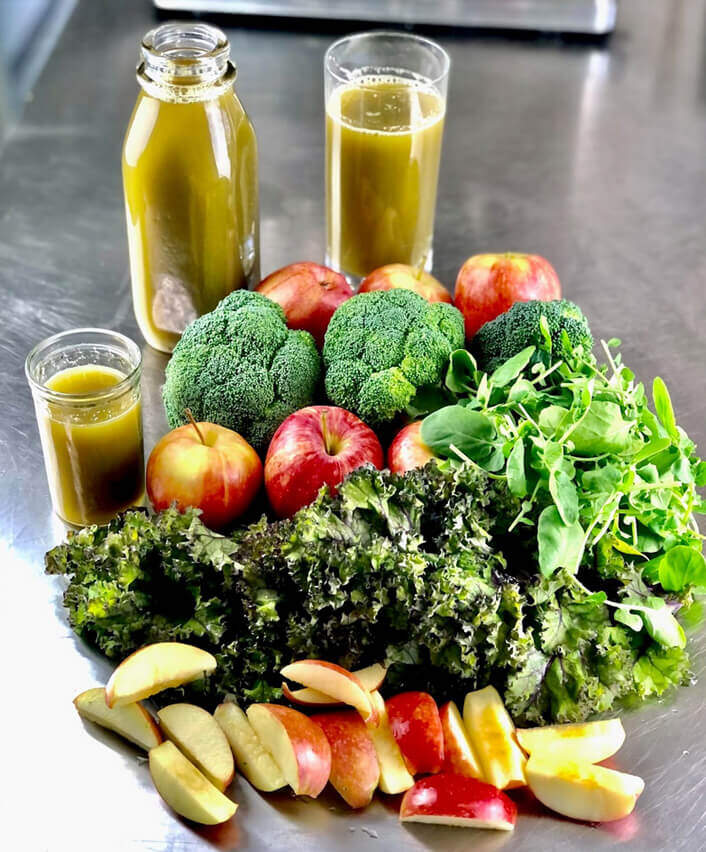
How can juice and phytonutrients create and maintain healthy skin and hair?
Skin, hair, and nails LOVE the nutrients found in juices, and drinking fruit and veggie juices are one of the easiest (and tastiest) ways to get them.
Polyphenols are widely distributed in fruits and vegetables and have extensive antioxidant activity which has been shown to protect from oxidative stress by toxins, infectious organisms, pro-inflammatory foods like sugar, oil, meat, and refined grains, drugs, alcohol, poor sleep, medications, and more. Juices high in polyphenols include those with berries, especially blueberries, grapes, and carrots.
Flavonoids are naturally occurring compounds with a phenolic structure. They are found in a variety of fruits and vegetables and are the most common polyphenols found in nature. Over the past few decades, considerable research demonstrates the incredible health benefits these compounds hold for human health. Flavonoids are widely considered to be anti-inflammatory, anti-oxidant, and anti-carcinogenic. They are also known to improve immune regulation. Find flavonoids in abundance in citrus fruits and kale.
Luteolin is an important flavonoid found in flowering plants and while it has been shown to play a powerful neuroprotective role against neurodegenerative diseases and neurobehavioral symptoms (oops, there I go back to the brain again!), it also has important histamine inhibitory action which can greatly reduce resultant skin rash, hives and overall epidermal inflammation from mast cell activation. Mast cells are part of our innate immune system and are ubiquitous in our bodies, including within our skin layers. Exposures to chemicals, stress molecules, infectious organisms, or environmental toxins can induce mast cell degranulation releasing many of its mediators – the most important is histamine. These reactions result in skin inflammation, rashes, hives, and loss of protection from this important barrier. It also disrupts the natural skin microbiome. Natural antihistamines include luteolin and quercetin. The latter of which is found in red apples and red grapes.
Luteolin also reduces the TNF-induced production of inflammatory cytokines IL-6, IL-8, and VEGF from skin cells that are known to be associated with the autoimmune and inflammatory disorder, psoriasis. Furthermore, luteolin inhibits the expression of molecules that help atypical cells proliferate and migrate. Luteolin is easy to find in nature as it is abundant in cantaloupe, citrus fruits, bell peppers, and celery.
Another important flavonoid is anthocyanins which are naturally occurring pigments that confer color to many fruits and vegetables. It is the pigment that is responsible for much of the health benefits of that plant. For example, purple cauliflower, purple potatoes, red cabbage, and pomegranate! These compounds improve blood flow by both stabilizing endothelial function and may increase nitric oxide concentration. Nitric oxide (NO), which some believe a deficiency of is a common denominator in many degenerative processes, helps to open vessels for efficient blood delivery of oxygen and nutrients – critical for skin viability. Beets are high in NO concentration and a great vegetable to juice with many additional benefits.
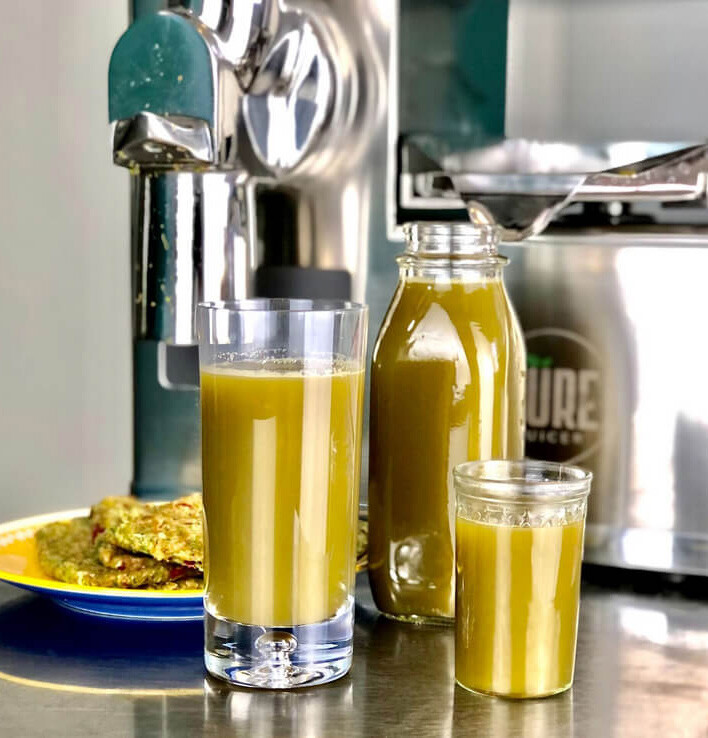
In addition to maintaining hydration for skin balance and microbiome control, elements such as copper, zinc, iron, and selenium and vitamins such as A, B, C, and E are critical. They promote antioxidant and anti-inflammatory activity and act as enhanced healing mechanisms for our skin. Vitamin deficiencies are known to have ill effects on our skin. Skin rashes and lesions are seen with deficiencies of vitamins such as A and B. Zinc, a critical element for organ function, has well-documented skin disorders associated with its deficiency.

Juice your parsley for iron, your peas for copper, garlic for selenium, and nut or seed milk for zinc. For vitamin A go crazy with carotenoids which is the natural precursor to vitamin A by consuming dark green leafy vegetables, green and yellow fruits, broccoli, carrots, kale, parsley, spinach, sweet potatoes, watercress, and squash. Get your Bs from kale, broccoli, peas, bananas, and seeds. Load up on vitamin C from cherries, red bell pepper, blackberries, papaya, dandelion, mangoes, asparagus, radishes, and cabbage. And don’t forget your vitamin E from carrots and spinach.
Finally, sulfur and silicon. Sulfur, an abundant element in your body, is important for skin health as it aids in detoxification and collagen stability. Sulfur is found in watercress and mustard greens as well as pineapple, peaches, and strawberries. And silicon, another abundant trace element in your body, is important for collagen synthesis and enzymes that maintain skin resilience. Silicon is found in carrots, bananas, and leafy greens.
Juice recipes to supplement your current hair and skincare routine
I regularly give juice recipes for gut and brain health to my patients and very often I hear (and see!) about improvements in their skin – whether it be the texture or appearance.
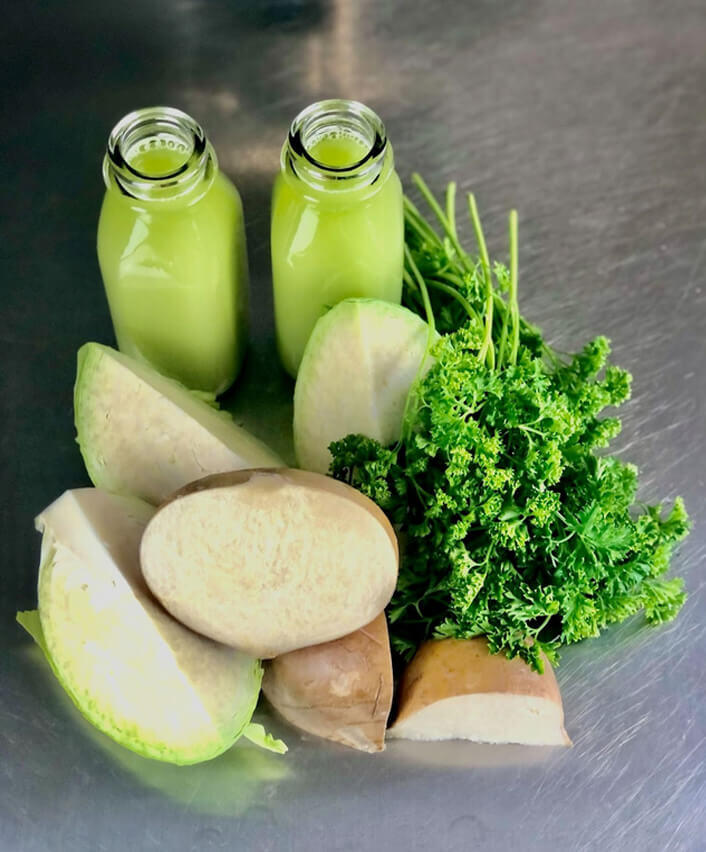
Recipes I love:
- Beets Above: Carrot, beets, lemon – This has a nice sweet flavor balanced by the tartness of the lemon. With high levels of nitric oxide and anthocyanins, this juice boosts blood delivery to the skin and to our other organs.
- Sparkly Skin: Cabbage, jicama, parsley – This juice is crisp and refreshing and contains an abundance of anti-inflammatory and cellular stability compounds to decrease internal inflammation which can change the appearance of our skin.
- Quenched: Peach, nectarine, dandelion greens – Quench your thirst with luteolin, minerals, and vitamins to help protect the structural integrity of the skin.
- Spicy Summer – Carrot, turmeric, ginger, blackberry – My favorite juice not only for its perfect balance of sweet, spicy, and savory but also for the sense of complete health with powerful anti-mutagenic and antioxidant compounds, phytonutrients, and vitamins.
- Kale’d It! – Apple, kale, broccoli, watercress – Bursting with flavonoids and mast cell stabilization, this juice fights free radical damage from exogenous exposures.
Aging skin and hair
Aging is caused by the accumulation of damage from oxidative stress, inflammation, and mitochondrial burden to our skin and organs. Our repair mechanisms falter as we age due to a host of factors including genetics, medical history, medications, exposures, and lifestyle. Despite having little control over factors like genetics and medical history, we DO have great control over lifestyle choices like diet and exercise. A regimen rich with antioxidants and anti-inflammatory foods like the ones I have sprinkled throughout this article make up the primary building blocks for slowing the controllable external factors that age our skin.
Summary
While the skincare fridges to store your powerful topicals are all the rage, today I encourage adding a new kind of skincare fridge into your life – one full of antioxidant-rich fruits and veggies and potent and delicious cold-pressed juices.
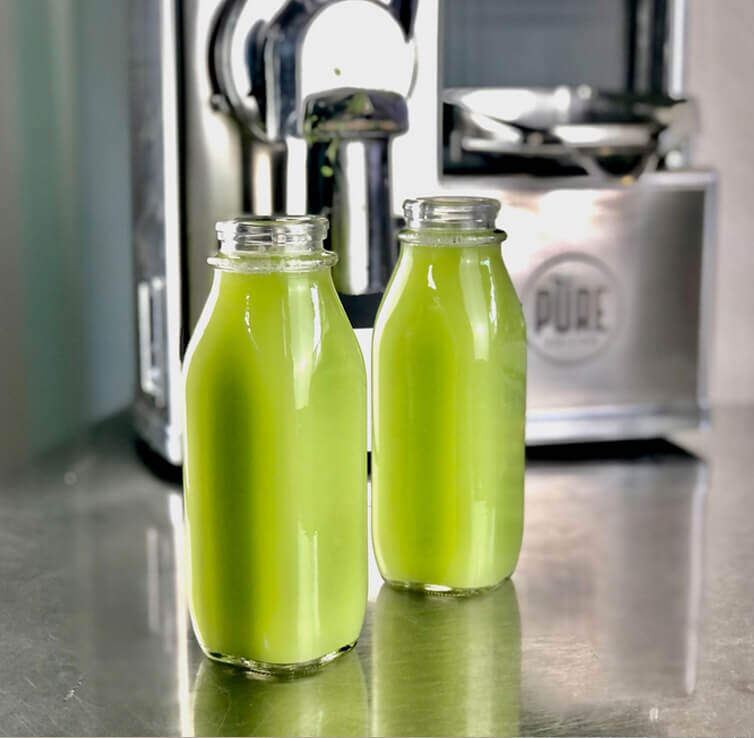
About Jennifer Reichel, MD
Dr. Reichel is on faculty at the University of Washington and is the primary teacher of cosmetic procedures for dermatology residents and fellows. She is active on a national level and is a regular speaker at skin surgery meetings. She has been featured on television and in numerous magazines including New Beauty, Spa Magazine, Allure, Skin & Aging, and MedEsthetics. She is a fellow of the American Academy of Dermatology (AAD), the American Society for Dermatologic Surgery (ASDS), The American College of Mohs Surgery (ACMS), the American Society for Laser Medicine and Surgery (ASLMS) the Women’s Dermatologic Society (WDS), and the Seattle and Washington Dermatologic Societies.
References
Kanda N, Hoashi T, Saeki H. Nutrition and psoriasis. Int J Mol Sci. 2020 July 29;21(15):5405.
Ogawa Y, Kinoshita M, Shimada S, et al. Zinc and skin disorders. Nutrients. 2018 Feb 11;10(2):199.
Panche AN, Diwan AD, Chandra SR. Flavonoids: an overview. J Nutr Sci. 2016 Dec 29;5:e47.
https://performancehealthcenter.com/2020/02/the-top-10-inflammatory-foods-to-avoid/
